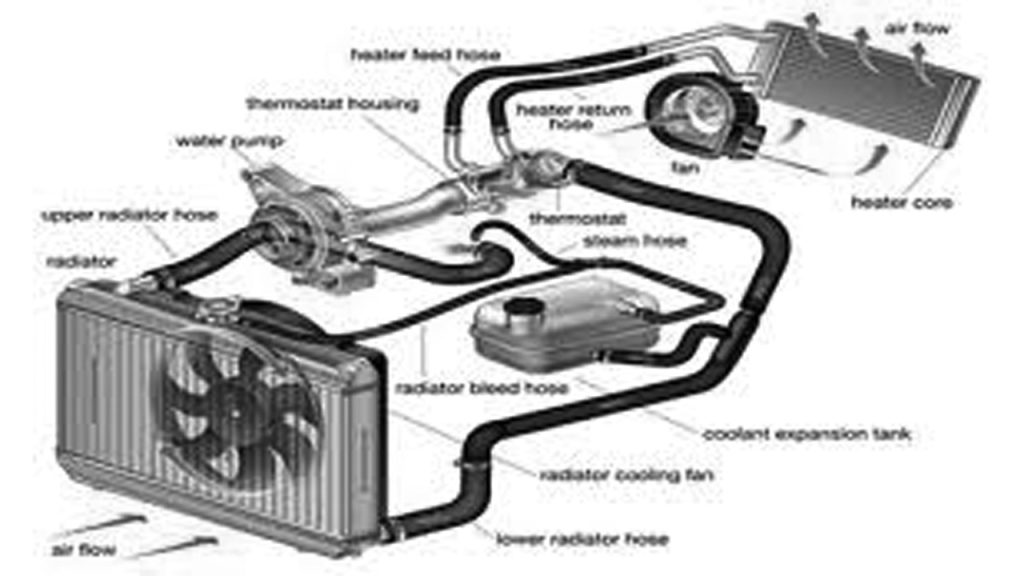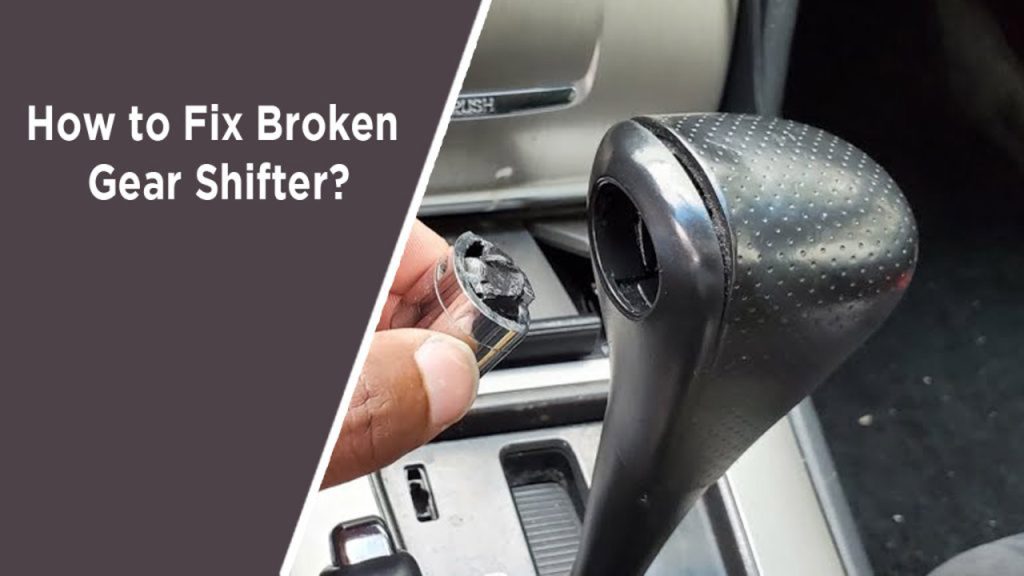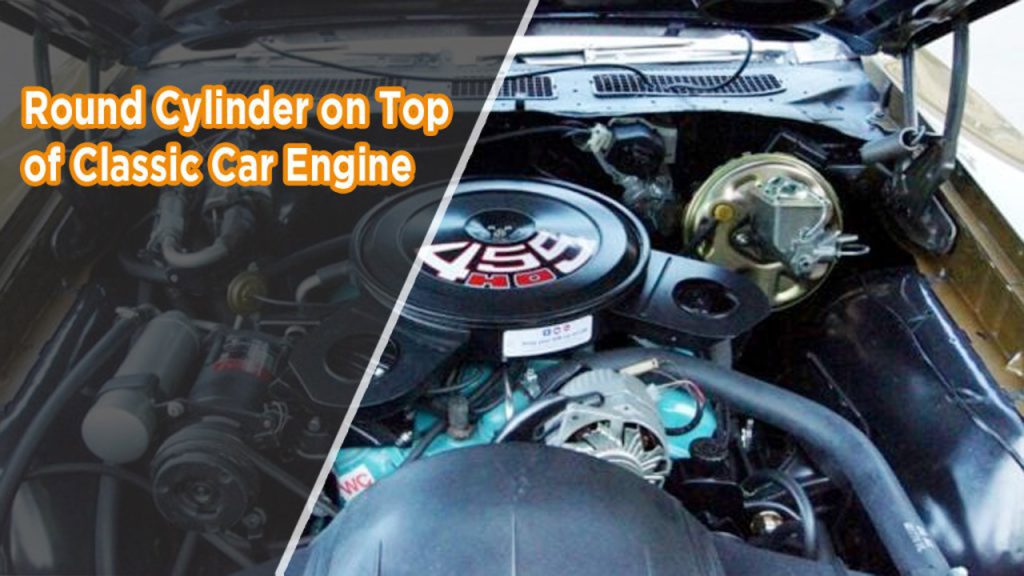If you’ve ever wondered what keeps your car’s engine from overheating while you’re driving, you’re thinking about the cooling system. This critical component plays a huge role in ensuring your vehicle runs smoothly and efficiently, no matter the conditions.
I’ve spent a fair amount of time tinkering with cars and learning how different systems work. The cooling system is one of those things that seems simple on the surface, but there’s actually a lot going on behind the scenes. Let me walk you through what the cooling system of a car is, how it works, and why it’s so essential.

Image by docmotorworks
What Is the Cooling System of a Car?
The cooling system in a car is a network of components designed to manage the temperature of the engine. An engine generates a lot of heat when it’s running—think about the constant explosions happening in the cylinders. Without something to regulate that heat, the engine would quickly overheat and fail.
The cooling system helps by absorbing excess heat, transferring it away from the engine, and releasing it into the air or elsewhere. At the same time, it maintains the engine at an optimal operating temperature, ensuring performance and efficiency.
Components of the Cooling System
Let’s break down the cooling system’s main components. Each plays a specific role, and together they ensure the system works effectively.
Radiator
The radiator is like the heart of the cooling system. It cools the coolant (the liquid that absorbs engine heat) by allowing air to pass through its fins. The heat from the coolant is transferred to the air, lowering the liquid’s temperature before it recirculates.
Coolant
Coolant, often a mix of water and antifreeze, circulates through the engine, absorbing heat. It also prevents freezing in cold conditions and corrosion within the cooling system.
Water Pump
The water pump ensures that the coolant circulates throughout the system. It’s usually driven by a belt connected to the engine.
Thermostat
The thermostat regulates the flow of coolant. When the engine is cold, it stays closed to let the engine warm up quickly. Once the engine reaches the right temperature, the thermostat opens to allow coolant to flow to the radiator.
Hoses
Hoses carry the coolant between the engine, radiator, and other components. They need to be durable and heat-resistant.
Cooling Fans
Electric or belt-driven fans help draw air through the radiator, especially when the car isn’t moving fast enough to force air through naturally.
Expansion Tank
This tank collects excess coolant that expands when heated and returns it to the system when the engine cools.
How Does the Cooling System Work?
Now that you know the components, let’s talk about how they work together to keep your car’s engine cool.
Coolant Absorbs Heat
When you start your engine, the coolant begins circulating through the engine block and cylinder heads. Its job is to absorb the heat generated by the combustion process.
Thermostat Opens
At first, the thermostat remains closed to allow the engine to warm up quickly. Once the coolant reaches a specific temperature, the thermostat opens, allowing the coolant to flow through the radiator.
Radiator Releases Heat
As the hot coolant enters the radiator, it flows through thin tubes surrounded by cooling fins. Air passes over these fins, transferring the heat from the coolant to the air.
Fans Provide Additional Airflow
If the car isn’t moving fast enough to push air through the radiator naturally, the cooling fans kick in. They help draw air through the radiator to ensure the coolant cools efficiently.
Coolant Recirculates
The cooled coolant flows back into the engine, repeating the process. This cycle continues as long as the engine is running, maintaining an ideal temperature.
Cooling System Problems and How to Spot Them
Even though the cooling system is designed to be durable, it can develop issues over time. Here are some common problems to watch out for:
Leaking Coolant
If you notice a puddle of green, orange, or pink liquid under your car, you might have a coolant leak. This can happen due to cracked hoses, a damaged radiator, or a faulty water pump.
Overheating
An overheating engine can be caused by low coolant levels, a stuck thermostat, or a malfunctioning radiator fan.
Rust or Contaminated Coolant
Coolant should be clear and brightly colored. If it looks rusty or cloudy, it could mean there’s corrosion in the system or contamination.
Broken Water Pump
A faulty water pump won’t circulate coolant properly, leading to overheating.
Maintaining Your Car’s Cooling System
Regular maintenance is key to keeping your cooling system in good condition. Here’s what I recommend:
- Check Coolant Levels: Make sure the coolant is at the correct level and top it off if needed.
- Flush the System: Over time, coolant can degrade and lose its effectiveness. Flushing the system every 30,000 to 50,000 miles can help.
- Inspect Hoses and Belts: Look for cracks, leaks, or wear and replace them if necessary.
- Monitor Temperature Gauge: Keep an eye on the temperature gauge on your dashboard. If it starts climbing, address the issue immediately.
Comparing Air-Cooled vs Liquid-Cooled Systems
While most modern cars use liquid cooling, some vehicles (like motorcycles or older models) rely on air-cooled systems. Here’s a quick comparison:
| Aspect | Liquid-Cooled System | Air-Cooled System |
|---|---|---|
| Cooling Medium | Coolant (liquid) | Air |
| Efficiency | More efficient | Less efficient |
| Complexity | More complex | Simpler design |
| Usage | Cars, trucks, modern vehicles | Small engines, motorcycles |
Why Is the Cooling System Important?
The cooling system does more than just prevent overheating. It ensures the engine operates within a specific temperature range, which is vital for:
- Fuel Efficiency: An engine running too hot or too cold burns fuel less efficiently.
- Performance: Proper cooling helps the engine perform at its best.
- Longevity: Overheating can cause severe damage to engine components, leading to costly repairs.
Conclusion
Understanding the cooling system of your car is more than just car knowledge—it’s an essential part of vehicle maintenance. This system is the unsung hero that keeps your engine running smoothly, no matter the weather or driving conditions.
From the radiator to the water pump, each component plays a crucial role in managing engine temperature. By knowing how it works and staying on top of maintenance, you can prevent overheating and extend the life of your car.
I always tell people, “Your car’s cooling system is like its temperature regulator—treat it well, and it’ll take care of you.”
FAQs
What type of coolant should I use in my car?
Check your owner’s manual for the recommended coolant type. Using the wrong one can cause damage.
How often should I flush my cooling system?
It’s generally recommended to flush the cooling system every 30,000 to 50,000 miles, but consult your car’s manual for specifics.
Can I drive my car if it’s overheating?
No, driving an overheating car can cause severe engine damage. Pull over and address the issue immediately.
Why does my coolant level keep dropping?
A dropping coolant level could indicate a leak in the system. Inspect for visible leaks or have a mechanic check it out.
Is it normal for my car to lose a little coolant over time?
Some minor loss due to evaporation is normal, but significant drops should be investigated.


